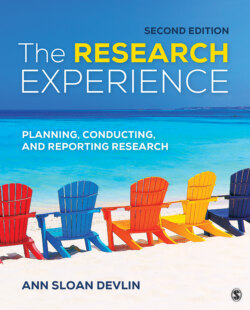Читать книгу The Research Experience - Ann Sloan Devlin - Страница 11
Why Research Matters
ОглавлениеIn the movie The Big Short, which depicted the implosion of the housing market and the collapse of the financial system in the United States, hedge-fund manager Mark Baum (the character played by actor Steve Carell) and his team go out in the field to collect data on the “health” of the housing market. Rather than accepting someone else’s conclusion that the housing market was a “bubble” about to burst, they collect their own data by consulting a real estate agent, several mortgage brokers, and even an exotic dancer (who has adjustable rate mortgages on five houses, as it turns out). Social scientists might not consider this credible research, but at least Baum and his team were willing to look at some evidence. As you will learn later in this book, there were some problems with their approach, although their conclusion was correct (it wouldn’t have made a good story, otherwise). As you will see in Chapter 11, their sampling strategy was flawed because they looked at only one housing market in the United States (Miami); they needed a random sample of housing markets across the United States to be more certain about the housing bubble.
Every day you see behavior that triggers questions ranging from the mundane—“What do people think of students who wear pajamas to class?”—to the more important—“Do people disclose less information to their health care providers when a ‘medical scribe’ (i.e., someone taking notes for the physician) is in the room?” How do we evaluate the research in terms of its credibility? That is, what makes research believable or convincing? What criteria should we use in evaluating the findings of a research study? Courses in research methods provide the tools to conduct and evaluate research. Students may take a research methods course because it is required, but the information will serve them far beyond the course. Learning how to evaluate research may help students make more informed and potentially life-altering decisions in the future (e.g., whether to take a particular medication to treat a condition or how much to pay for a particular home).
Research can help you answer a variety of questions, some of them very important. Being able to evaluate research gives you a powerful set of tools to solve problems, especially because the body of knowledge is expanding exponentially. To ask and answer good questions, it is helpful to understand how humans think because humans have cognitive capacities that both help (category formation; common sense; flexibility; creativity) and hurt (stereotypes; heuristics, that is shortcuts in thinking) the research process. In fact, the same cognitive capacity can be adaptive in some situations and maladaptive in others. For example, using speed to make a decision under duress might save your life, but it might make you an unreliable eyewitness. Recognizing these cognitive characteristics in yourself will help you maximize the positive aspects and minimize the negative aspects in the research process. In this chapter, you will learn about the kinds of heuristics or shortcuts humans use in thinking and how these may shape our approach to research. Armed with this information, you will be better prepared to both evaluate the research that others conduct and carry out your own research.
Heuristics: Mental shortcuts (e.g., estimations and common sense) that often guide thinking and problem solving.
In this chapter, four categories of how thinking “goes wrong” from a list generated by Michael Shermer (1997) will be highlighted. The chapter will also present some adaptive characteristics humans have, most notably, common sense. The chapter also introduces you to the distinctions between law, theory, and hypothesis (a proposed explanation for the relationship between variables that must be tested) and explores why theory is important and how a good research question is connected to theory.
Hypothesis: “A testable proposition based on theory, stating an expected empirical outcome resulting from specific observable conditions” (Corsini, 2002, p. 463).
